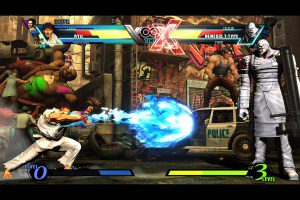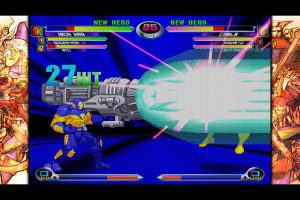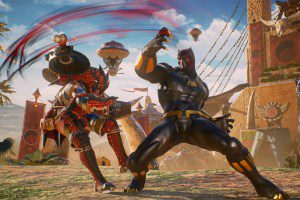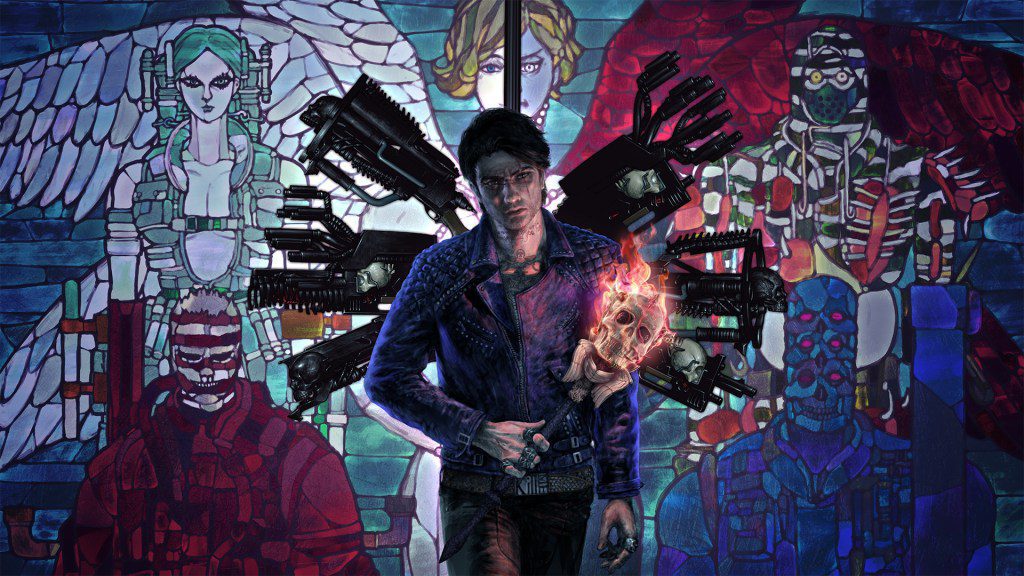Every ‘Marvel vs. Capcom’ Game, Ranked
The greatest crossover franchise in fighting game history is unrivaled, but not all entries are equal
Although they’ve long been a staple in pop culture, fighting games have been having a renaissance over the last few years. With big sequels like Street Fighter 6 and Tekken 8 rejuvenating classic franchises, cult series like Fatal Fury coming back to the limelight, and even new contenders like League of Legends spin-off 2XKO staking their claim for mass appeal, the fighting game community hasn’t seen this level of love since the Nineties.
Yet despite the renewed interest in genre, one franchise has remained dormant until now: Marvel vs. Capcom. Like peanut butter and jelly (or chocolate, or anything really), the combination of Marvel’s globally recognizable characters and Capcom’s fighting game chops has made for some of the most beloved arcade-style brawlers in history.
The crossover series technically began 1996’s X-Men vs. Street Fighter, but its roots date back to 1994’s X-Men: Children of the Atom, the first fighting game produced by Capcom using the Marvel Comics license. Since then, it’s seen eight mainline entries (updated versions and re-releases notwithstanding), and helped cement many of the genre’s most innovative mechanics with its combination of turbo speed gameplay, endless combos, and of course, the tag team system.
The series hasn’t seen a new entry since the much-maligned Marvel vs. Capcom: Infinite in 2017, but with the recently released Marvel vs. Capcom Fighting Collection: Arcade Classics, an entirely new generation of players are now getting in on the frenzy that took over the scene, from casual to pro, for the better part of two decades.
But not all games in the franchise are on equal footing. While on the surface, they mostly appear to play alike, each had its own features and quirks that set them apart. And while opinions on which ones reign supreme may come down to a generational divide, there are some clear contenders for the top spots.
Here are all the mainline Marvel vs. Capcom games, ranked from worst to best.
-
‘Marvel vs. Capcom: Infinite’
Image Credit: Capcom This one’s obvious. After 20 years of crossover fighting game bliss, 2017’s Marvel vs. Capcom: Infinite threw away pretty much all the series’ goodwill in an instant. Although it wasn’t the first game in the franchise developed after Disney’s acquisition of Marvel in 2009, it was the only one to feel the brunt of the corporation’s deemphasis on properties like the X-Men, which at the time were licensed to competitor Fox. Completely omitting all of Marvel’s mutants from its roster, Infinite immediately felt like a bastardization of the core tenets of the series, which since its first entry, 1994’s X-Men: Children of the Atom, has regularly featured characters like Wolverine, Cyclops, and Storm even in the big mashup games with bring in other Marvel heroes.
Mechanically, Infinite aimed to target a broader audience than its predecessors, streamlining many of the games’ systems by combining the most simplistic elements of previous ones into a single accessible package. While most entries pre-Marvel vs. Capcom 2 used a 6-button layout for attacks, Infinite narrows it down to four, and limits the number of characters usable in match to two per player (down from three previously).
With a full roster of 36 playable characters, the selections were fine enough but felt distinctly lacking in terms of fan-favorites from over the years like the aforementioned X-Men or even Street Fighter staples Ken or Akuma. With an ugly, unpolished aesthetic from its character models right down to its user interface, paired with its dumbed down controls, everything about Infinite looks and feels like a budget title. Until the recent collection re-release, many had assumed that this game had essentially killed the franchise, with fans going so far as to rebuild the game with their own mods to give it the love it deserves.
-
‘X-Men: Children of the Atom’

Image Credit: Capcom As Capcom’s first Marvel-themed fighter, 1994’s X-Men: Children of the Atom arrived at the apex of popularity for the developer’s arcade hit Street Fighter II and helped solidify their total domination of the genre. Using many of the mechanics from Super Street Fighter II Turbo and Darkstalkers: The Night Warriors, both released that same year, Children of the Atom played like the best of the best from the era while also capitalizing on IP’s the surge in popularity following TV’s X-Men: The Animated Series.
Like Street Fighter II, Children of the Atom is a 1v1 fighter where players can choose one of 13 characters (three of which are secretly unlockable with cheats), including Cyclops, Storm, and everyone’s favorite little tough guy, Wolverine. COTA famously introduced the concept of the Super Jump, i.e. the ability to jump again on top of a jump, creating an aerial-attack heavy dynamic whose verticality broke away from the more methodical ground play of its peers. Although not as flashy or frenetic as later games in the series, X-Men: Children of the Atom serves as the foundation for the rest of the series that holds up exceptionally well today as a no-frills competitive fighter with solid fundamentals.
-
‘Marvel Super Heroes’

Image Credit: Capcom The follow up to Children of the Atom, 1995’s Marvel Super Heroes plays a lot like its predecessor but with just about every aspect dialed in. The movement is faster and more fluid, super attacks flashier and more grandiose, and while it remains inspired by games like Super Street Fighter II Turbo, it also shares a lot of the same DNA as Street Fighter Alpha, the more over-the-top sub-series of Capcom’s arcade fare.
While the game retains fan-favorite mutants like Wolverine and Psylocke, along with Magneto and Juggernaut playable as non-secret characters, the roster mostly swaps out the X-Men for Avengers like Captain America, Hulk, and Iron Man — on top of a certain web-headed wallcrawler.
The game’s big twist is the inclusion of Marvel’s MacGuffins of choice, the Infinity Gems. During matches, players can beat the stones out of their opponent for brief advantages like increased speed or attack power to help turn the tide in their favor. Super Heroes also popularized one of the series best (and most broken) mechanics in the form of “infinite” combos, i.e. sequences of attacks that can loop perfectly when executed correctly, leaving the recipient helplessly flailing like a rag doll until the sweet release of defeat.
-
‘Marvel Super Heroes vs. Street Fighter’

Image Credit: Capcom The fourth entry in Capcom’s Marvel fighting game pantheon is something of a middle child. While 1996’s X-Men vs. Street Fighter established the formula for the tag team crossover event, 1997’s Marvel Super Heroes vs. Street Fighter feels more like an iterative update than anything substantial. Arriving in the early days of online gaming forums and sites where information about new games was often spread through word of mouth or in magazines, it was a game that many never even knew existed unless they stumbled across it in person.
Like Marvel Super Heroes to Children of the Atom, MSHvSF does much of what its predecessor did while swapping out most of its X-Men for Avengers, this time pitted against Street Fighter mainstays like Ryu and Chun-Li. As a tag team game, players were able to choose two characters each round, playing as one until KO’d and swapping to the other. The big feature introduced here was the Variable Assist, which allowed players to summon their partner to pop in for a quick hit without the need to fully swap out.
By all accounts, Marvel Super Heroes vs. Street Fighter is a solid tag team fighter, it’s just a mostly forgotten one.
-
‘Marvel vs. Capcom 3: Fate of Two Worlds’

Image Credit: Capcom Marvel vs. Capcom 3 is an anomaly. Superior to its predecessors in as many ways as inferior, it’s the Schrödinger’s cat of fighting games. Released in 2011, it was the first game in the series to depart from the traditional 2D character sprites that had been mostly recycled game after game since 1994. Yet its 3D models are bland and lifeless, even with the heavy ink outlines that evoke a comic book feel. Even with the Ultimate version’s 50 playable characters, its roster is reduced, and although the newcomers diversify the cast beyond mere palette swaps, most of them lack the punch of the Nineties era favorites. Despite being one of the most complex and tightly balanced games in the series, it simply doesn’t feel as crunchy or impactful as its peers.
But for many, it’s the definitive Marvel vs. Capcom experience. After Marvel vs. Capcom 2’s 10-year reign as a flagship title, headlining Evo tournaments throughout the 2000s, MvC3 came in hot at the turn of the decade, bringing with it a changing of a guard. Until recently, many of the older games weren’t even available to play on digital platforms, leaving MvC3 as the de facto entry in the series for anyone perusing the shops.
Overall, it’s a good game — maybe even great — but doesn’t have the same arcade scene opulence as the best releases in the series.
-
‘X-Men vs. Street Fighter’

Image Credit: Capcom The first game in the franchise to go full-tilt into crossover territory, X-Men vs. Street Fighter wowed players with its sheer audacity back in 1996. Imagine a time when rumors of new video games were mostly spread through word of mouth, where a friend of a friend tells you that they played a game that let you fight Ryu or Ken with Wolverine. Sounds like bullshit, schoolyard myths. But it was very, very real.
X-Men vs. Street Fighter isn’t as mechanically deep as later games in the series, but it remains a pivotal part of the industry’s history as the first tag team brawler, allowing players to choose two characters at once for each match, a core feature that’s become synonymous with the franchise. Its very concept sounds outlandish, which makes its stellar execution that much better. Forever a great, there’s only a handful of games in the genre with as much influence decades later.
-
‘Marvel vs. Capcom: Clash of Super Heroes’

Image Credit: Capcom By 1998, the annual release of a comics-themed Capcom fighter felt all but assured, but after Marvel Super Heroes vs. Street Fighter, where could the series possibly go? Turns out, off the deep end.
Marvel vs. Capcom broke the mold for the crossover saga by opening up its roster to not just existing fighting game characters from Street Fighter or Dalkstalkers, but other classic Capcom IP like Captain Commando and Mega Man. Sticking with the 2v2 battle mechanic, the core gameplay remained similar to the previous two games, but now a third character was added as an assist, randomly selected at the start of each match from a pool of non-playable faces. Users could also now pull off gonzo beatdowns with Variable Cross and Duo Team Attacks that allowed for multiple fighters pummeling opponents in unison.
In Marvel vs. Capcom, bigger is better, and there’s no such thing as overkill.
-
‘Marvel vs. Capcom 2: A New Age of Heroes’

Image Credit: Capcom Considered by many to be the greatest fighting game of all time, 2000’s Marvel vs. Capcom 2: A New Age of Heroes is all about excess. Why have a single character that plays like Ryu when you can have five? Why choose two fighters when you can pick three? Why be held back from endless assists and constant on-screen swaps when you can create a visual clusterfuck on screen as special attack after special attack numbs your senses in flashing technicolor bliss?
For competitive level players at the time, Marvel vs. Capcom 2 could’ve been seen as a downgrade. Streamlining its button inputs from six to four, the game was mechanically less complex, although the increased fighter count opened worlds of new combo potential. Its music was famously grating, omitting individual character themes to accommodate its somewhat bloated roster, leaving its sonic thumbprint more generic. Visually, it was literally nothing new — the natural end point of six years’ worth of recycling the same pixelated in-game models, without any clear evolution.
And yet, despite its apparent lack of ambition, it remains a seminal achievement. Equally accessible to casual button mashers and high-minded combo maestros alike, it’s a fighting game for all. Anyone can pick up and play, and the ludicrously sized cast draws the eye for those with even a passing familiarity with gaming or comics like a moth to the flame.
Marvel vs. Capcom 2 is all gas, no brakes, and only gets deeper with time. As the headliner for this year’s Marvel vs. Capcom Fighting Collection, it’s likely the sole reason many are playing. But it serves as a perfect entry point to the genre just as well as a permanent stop. You may never need another fighting game other than Marvel vs. Capcom 2, and 24 years later, there’s still nothing quite like it.
For maximum effect, make sure you’re playing it while listening to “Livin’ la Vida Loca.”





